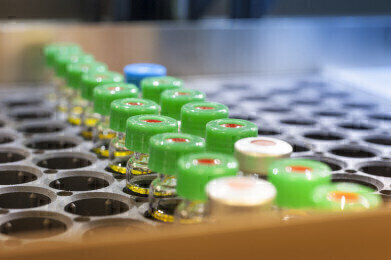GC, MDGC
Chromatography Revolutionises Cell Membrane Research
Jun 03 2014
Gas chromatography - the process of separating out the various components of a compound for individual analysis – is already used in a variety of different fields of research. Pharmaceuticals, agricultural research and forensic science all employ chromatography to great effect. For more information on its merits and applications, especially in the field of metabolomic analysis, check read this introduction into the Role of Gas Chromatography - Mass Spectrometry (GC-MS) in Metabolomic.
Now, chromatography has broken new ground in the form of cell membrane study. At the University of California, Berkeley, Jay Groves and his team of researchers have developed a new method of incorporating chromatography into their work, which has revolutionised cell membrane investigation.
Previously, cell membranes had been studied only through the use of different types of microscopy. Such a method has traditionally been limiting in the scope of study, since the majority of conventional techniques cannot cope with visual images of structures smaller than 250nm (nanometres, or one thousand-millionth of a metre) in size. Unfortunately, many of the more interesting aspects of the cell membrane are precisely smaller than this size, and because of the limiting properties of light diffraction, can’t be properly studied using microscopy. Even those techniques of super-resolution microscopy which have been furthered in recent years are only capable of producing static images, which is hardly ideal for the constant fluctuation and change inherent in cell membrane proteins.
Fortunately, Groves and his team have now found a way to study these smaller components using chromatography. By binding the proteins on an artificial membrane to the receptors on a cell membrane using gold nanoparticles, the team were able to discern the size of the receptors in question and how their activity was affected by movement.
The technique was pioneered on a sample of T cells, an integral part of the human immune system. The experiment revealed startling discoveries about the interaction of the receptors with the concentration of antigens in the cell membrane.
“This is something we did not know before about the TCR microcluster signaling system, which has been well-studied using conventional optical microscopy,’” Groves explained. “It is a proof-of-principle demonstration that represents another step in the direction of interfacing living cells with synthetic materials to achieve molecular level control of the cell.”
Such promising discoveries at such an early stage in the employment of chromatography in the field of cell membrane research can only herald positive omens. As the techniques are refined by Groves and his team and researchers around the globe, we can expect to learn more about these tiny particles and the contrastingly immense roles they play in the activity, functionality and reactivity of their compounds.
Digital Edition
Chromatography Today - Buyers' Guide 2022
October 2023
In This Edition Modern & Practical Applications - Accelerating ADC Development with Mass Spectrometry - Implementing High-Resolution Ion Mobility into Peptide Mapping Workflows Chromatogr...
View all digital editions
Events
May 19 2024 Brno, Czech Republic
May 21 2024 Lagos, Nigeria
May 23 2024 Beijing, China
May 28 2024 Tel Aviv, Israel
May 28 2024 Leuven, Belgium














